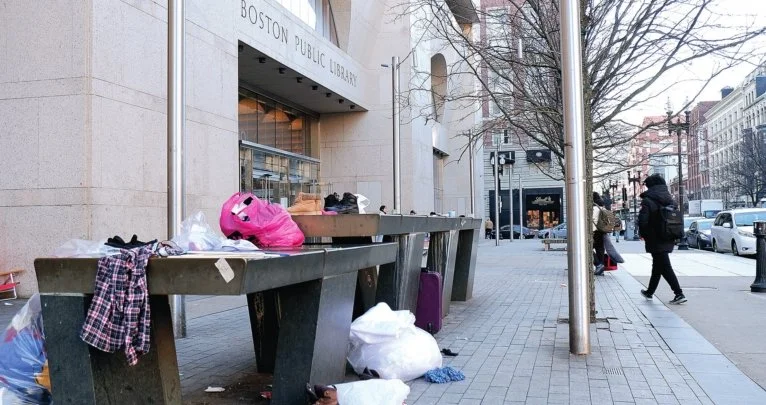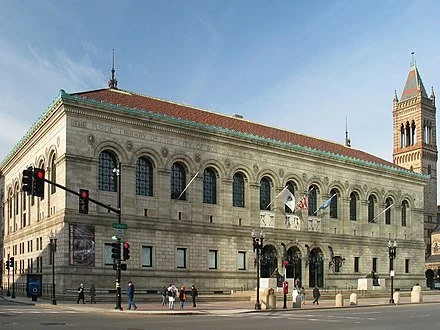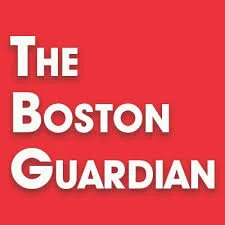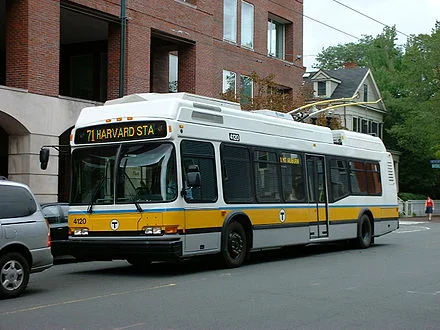
Where ‘Jimmies' came from
From a Boston Guardian article by Jonathan Brand
(Robert Whitcomb, New England Diary’s editor, is The Guardian’s chairman)
Newcomers to Boston’s many unusual words and phrases are often perplexed about their origins. Those indulging in ice cream in the city might sometimes wish that they had brought along a personal cryptanalyst, a number 2 pencil and Advil.
When ordering, for example, a large Green Monstah sundae they must learn to expect the final topping to be Jimmies, aka, chocolate sprinkles. This beloved Bostonian word has its origins back in the 1940s during a young boy’s battle against cancer and a feature on the radio.
New bike, bus lanes on Boylston have fans and foes
On Boylston Street
Excerpted from The Boston Guardian
The city has begun adding bike and bus lanes to Boylston Street in Boston’s Back Bay, kicking off weeks of intermittent road work along with furious debate among residents and commuters.
Boylston’s redesign comes courtesy of the Back Bay Mobility Projects, a sweeping initiative covering almost the entire neighborhood. Workers broke ground for the Boylston section on June 9, with the aim of installing bus and bike lanes, changing parking with new moped loading zones and new signals separating turn lights from crossing periods.
The redesign will be starting on Massachusetts Avenue and working its way east to Arlington Street. Sidewalks will remain open, but planners do anticipate the need for parking restrictions around affected areas.
A city spokesperson said they expect work to continue for about three weeks, probably ending near the start of July. Workers will be installing new markings and flex posts at night, saving daytimes for signal changes and sign installation.
"The changes on Boylston Street will make the roadway safer for all who live, work and visit in the Back Bay, improving speed and reliability for the more than 13,000 people who ride on the bus each day,” said the Boston Transportation Department (BTD). {But not everyone, especially some business people, agrees.}
Not for book dropoffs
Outside the 1972 addition to the headquarters building of the Boston Public Library.
The front of the grand headquarters/main branch of the Boston Public Library, on Copley Square, one of America’s most beautiful public places. Designed by Charles McKim, the building was opened in 1895 as “a palace for the people.’’
(The editor of New England Diary, Robert Whitcomb, is chairman of The Boston Guardian.)
“Unhoused Bostonians continue to congregate around the main branch of the city library, a trend that’s unlikely to abate even if city housing investments start to pay off.
“Use of the sidewalk on Boylston Street beside the Boston Public Library (BPL) as a gathering spot for Boston’s homeless has produced some friction with passersby, mostly stemming from occasionally hazardous litter and some uncomfortable interactions with other library patrons.
“The BPL, city government and neighborhood groups have concentrated outreach efforts in the area, but it’s never gotten close to the level of obstruction and concern garnered at hotspots like Mass and Cass.’’
Solidarity with Israel in Boston
— Photo by Rick Friedman
The D. L. Saunders Company and The Boston Guardian unveiled a total of 10,000 American and Israeli flags — 5,000 for each country — in Statler Park, in downtown Boston, on Oct. 18. They will be on display through Oct. 22
The flags were planted by Andrew Lafuente in about six hours.
In attendance were Israeli Consul General Meron Reuben, City Council President Ed Flynn, State Representatives Aaron Michlewitz, Jay Livingstone and John Moran, Back Bay Association President Meg Mainer Cohen, Boston Guardian Publisher David Jacobs and Associate Editor Gen Tracy, and Red Sox Senior Vice President David Friedman.
Polls suggest that about 75 percent of Americans take Israel’s side in the war started by Hamas on Oct. 7.
Robert Whitcomb: Beacon Hill — 19th Century theme park
Houses on Louisburg Square, the most exclusive part of Beacon Hill
Cobblestoned Acorn Street
Via The Boston Guardian
Now that the weather is mild, pick up a copy of Anthony M. Sammarco’s latest richly illustrated history book, Beacon Hill Through Time. The 96-page work, on high-quality paper, is available from Arcadia Publishing at a list price of $23.99.
The book, with a mix of Peter B. Kingman’s expertly composed photos and a multitude of archival pictures, may surprise a lot of people.
Consider, for instance, how relatively late much of Beacon Hill was developed, considering that Boston was founded in 1630. The hill’s South Slope didn’t become the famously upscale residential area that people think of now until well after 1800, as the new wealth from the China Trade and other shipping, followed by fortunes made in manufacturing and finance, paid for grand mansions, brick and stone row houses and private clubs and other institutions.
There were some teardowns on the South Slope of a few older houses, most notably John Hancock’s mansion, built in the 1730’s and destroyed in 1863 to make way for an addition to the glorious Charles Bullfinch-designed Massachusetts State House (completed in 1798) at the top of the hill. Bullfinch, as architect and developer, is the father of Beacon Hill.
It’s basically a creation of the 19th Century, when the American public began to associate the hill (and then also the Back Bay) with the mercantile aristocracy to be called the “Boston Brahmins’’.
I was surprised to learn that many buildings I had thought were built in the late 18th or early 19th Century are actually decades newer. Architects have heavily used Colonial Revival and Federalist and 18th and 19th Century London residential styles right up to the present to maintain Beacon Hill’s antique appearance. Consider West Hill Place, where, Mr. Sammarco notes: “The design of these houses – with their high-style neoclassical details…made it seem as if London had been transplanted in Boston.’’
Then, as Mr. Sammarco explains, there were the waves of ethnic groups moving on and off the hill, along with various religious, political and other movements. For example, an African-American community developed early on the hill’s North Slope that created their own religious and other institutions, as did various Eastern European and other immigrants who followed. These flows led to such changes as, for example, a Black Baptist church being transformed into synagogue. Meanwhile, shops changed with neighborhood demographics as well as with the evolution of the broader consumer society.
You’ll see in the book how big, high-rise business buildings replaced lovely residential sections – sad but reflecting Boston’s wealth-creating capacity. Consider the elegant Pemberton Square before commerce took it over, late in the 19th Century.
Many direct most of their attention to the sights on the hill itself – e.g., Louisburg Square – rather than to the “Flat of the Hill’’ down by the Charles River and created by using fill from chopping off the tops of Beacon, Mt. Vernon and Pemberton hills (the “Tremonts’’). There are some gorgeous areas there, too, such as Charles River Square.
So you’ll probably want to plan several explorations with Mr. Sammarco’s book in hand. is
Robert Whitcomb is New England Diary’s editor and president of The Boston Guardian, where this piece first appeared.
View of John Hancock's house on Beacon Hill west of the summit from across the Common, 1768
Download Boston Guardian’s new app
Download The Boston Guardian’s app on your iPhone, tablet and computer by going to the Apple store. The Guardian is chock full of news and feature stories, and photos, about life in New England’s capital, especially the Back Bay, the Fenway-Kenmore Square area, Beacon Hill and the business/commercial downtown. The Guardian is Boston’s largest circulation weekly newspaper.
The Boston Guardian
Looking across the Charles River to the Back Bay neighborhood, where The Boston Guardian is based.
For exciting and thorough coverage of Boston, please hit this link to The Boston Guardian.
Partly non-virus-related!
Adapted from Robert Whitcomb’s “Digital Diary,’’ in GoLocal24.com
With many newspapers shrinking unto death, all they seem to have room for is COVID-19 stuff; there are many other important things happening around the world that aren’t being reported. As the late Bill Kreger, a news editor to whom I reported at The Wall Street Journal once observed: “Sometimes the most important story starts out at the bottom of Page 37.’’ What might we be missing?
Well, The Boston Guardian reports that property and violent crime is down in its circulation area (the Back Bay, Beacon Hill , downtown and Fenway) this year. But maybe that’s a virus-related story? As newly unemployed people run out of money will property crimes increase?
Then there’s an inspiring little item from the March 24 Wall Street Journal: Voters in Mexican border city of Mexicali have admirably told the U.S. company Constellation Brands not to complete a $1.4 billion brewery there because the facility would take so much water that it could jeopardize the irrigation-dependent agriculture in the region.
In other heartening, if mostly symbolic, news, the U.S. has indicted Venezuelan dictator Nicolas Maduro and some sidekicks for drug trafficking and is offering $15 million to those who aid his capture. Don’t expect Maduro to appear any time soon in a federal court, but the move is apt to make him nervous.
And there’s the important unhappy news that the world’s greatest coral reef, Australia’s Great Barrier Reef, had just suffered another mass bleaching caused by global warming, whose associated increase in carbon dioxide makes sea water more acidic. For more information, please hit this link.
Safe and empty high in the air
The 60 story Millennium Tower, in Boston, apparently a haven for flight capitalists from abroad.
From Robert Whitcomb’s “Digital Diary,’’ in GoLocal24.com
Will this happen in some of Providence’s new residential towers? Joe Walsh of The Boston Guardian (where I serve as unpaid president) reports that “downtown neighborhoods only added about 1,100 owner-occupied condos in the last 15 years, even as the total number of condos grew by nearly 6,000.’’ Much of this strange change can be explained by foreign buyers seeking a safe place to own real estate, as investments and/or as places to move to. Prosperous American cities such as Boston, San Francisco and New York are particularly attractive to rich people from nations that lack a rigorous rule of law that protects property rights. Consider Russia and China.
Owning a fancy condo in a rich U.S. city looks like a safe way to store wealth.
Consider that in at least one new Boston luxury building, Millennium Tower, three out of four units have owners who don’t claim owner-occupancy tax exemptions! That suggests why some of these buildings look remarkably dark at night. Some nearby store and restaurant owners complain that the near-empty buildings mean far fewer customers than you’d expect from proximity to such huge buildings.
You could see something like this happening in parts of downtown Providence and the East Side, particularly with rich parents of students at Brown seeking pied-a-terres. Jason Fane’s proposed 46-story Hope Point Tower, if the next recession doesn’t kill it, might lure a lot of these people.
Robert Whitcomb: Broadway-bound in Boston
Inside the Colonial Theatre, in Boston.
“Another op'nin', another show
In Philly, Boston or Baltimoe,
A chance for stagefolks to say ‘hello’
Another op'nin', another show.’’
From “Another Op'Nin', Another Show,’’ from Kiss Me, Kate, music and lyrics by Cole Porter. Opened on Broadway in 1948, in the heyday of the great Broadway musicals and their tryouts outside of New York.
When I was a kid, in the ‘50s and early ‘60s, Boston was a big Broadway tryout town, with soon-to-be famous musicals and non-musical plays undergoing clinical testing and treatment in the city’s compact theater district before being sent to New York, or cancelled as unfixable. The Colonial, the Shubert and the Wilbur theaters were nationally known venues where demanding audiences and critics could make or break a production. Elliot Norton, the once-famous and longtime drama critic for Boston newspapers and WGBH Radio and TV, had considerable national power, which he exercised with great care and insight. He was lauded as a “play doctor,’’ whose suggestions helped make productions that he reviewed into hits on Broadway.
While I found some of the productions boring, I usually liked the theater evenings. Before the shows, my parents, my older sister and I would go to what seemed at the time exotic foreign restaurants, such as Athens Olympia, where I had my first Greek food (favoring the baklava) and Ola (sic?), a Scandinavian restaurant, where, I’m sorry to say, we ate whale meat. Except for my parents’ smoking, it was usually fun.
Many of the shows were musicals (by Rodgers & Hammerstein, Lerner & Loewe, etc.), but we also watched some serious (and occasionally inappropriate for children!) or comic nonmusical plays, too. If the show wasn’t all that thrilling, we could at least look forward to the colorful refreshments in the lobby in the intermissions.
(We also often went to big movies in Boston’s still prospering movie palaces. Ben Hur, This Is Cinerama, Around the World in Eighty Days, etc., but often matinees – not nearly as glamorous as going out at night. But you could eat popcorn at your seat – a no-no in a real theater.)
Boston’s role as a Broadway tryout town began fading in the 1970s. That strikes me as somewhat paradoxical because the city was starting to sweep off a rather Dickensian grittiness associated with the local decline of the textile and shoe business. By fits and starts, fueled by higher education, technology, investment companies and health care, the Hub was entering a renaissance that has made it truly a world city, with a glittery downtown, like, well, Manhattan.
And now the big British-based Ambassador Theatre Group (ATG) and Emerson College may spark a revival of New England’s capital as a Broadway tryout town centered at the Emerson Colonial Theatre, owned by the college; Emerson has longstanding entertainment-business connections. ATG, which is managing the facility, told The Boston Globe that it wants to do a pre-Broadway show there each year.
Of course, it’s a lot easier to see and hear a show on TV or on your computer than in person, but being in a theater as part of a night on the town is much more memorable. But how to make it easier to get to the theater in dense Boston? One way is for theaters to arrange chartered-bus networks to take people in comfort from places in and around Boston directly to the Theater District in season. We took such a bus to Symphony Hall last year and it was a pleasure. One price would cover tickets and transportation.
And, of course, MBTA service should be upgraded to let it better fit Theater District show schedules if and when Broadway-style show business expands enough in the Hub.
But building more parking garages in the district is not a solution. They simply lure more cars and cause more street congestion.
Putting on shows in big theaters is very expensive. There are smaller, high-quality regional venues in the area, most famously the nonprofit American Repertory Theater, in Cambridge, with 556 seats. They can provide some of the process of a Broadway tryout but not in the same way as big, Broadway-style venues such as the Shubert, the Wilbur and the Colonial, which replicate the sense of being in a New York City theater, with more than a thousand seats. Sometimes producers and directors need to gauge a big-audience reaction.
I wonder if college students in Greater Boston, besides those at Emerson, can do a lot of the low-wage jobs at Boston’s big theaters, thereby cutting production costs and thus encouraging more production companies to start their road to New York in the Hub.
Beats Baltimore and Philly! Of all the East Coast cities besides New York, Boston’s cultural history, highly educated audience and low crime make it best suited to be a Broadway tryout town.
Robert Whitcomb is editor of New England Diary and president of The Boston Guardian, where this column first appeared.
Robert Whitcomb: Boston transit trials and triumphs
MBTA trolley bus.
From, Robert Whitcomb's Boston Diary, in The Boston Guardian, where a version of this piece first ran.
A little historical perspective is needed as we whine about MBTA delays and cancellations (especially during and after winter storms) and gridlocked street traffic.
The fact is that Boston has much better mass transit now than it had, say, three decades ago. Most importantly, there’s a lot more of it available. And for all their occasional breakdowns, the MBTA subway cars, trolleys, buses and commuter trains are generally in better condition than they were when I lived in Boston fulltime, almost 50 years ago. (These days I ride MBTA subways and commuter rail once or twice a month.)
And consider the South Station bus-train complex at the center of the MBTA empire: for decades a depressing, dirty domain for derelicts. Now it’s a spectacular intermodal center, served by more subway, commuter rail and bus lines than a generation ago, as well as by Amtrak’s semi-high-speed Acela. I love that the MBTA’s still newish Silver Line will take you directly to Logan Airport from the complex.
I can well remember when young having to wait for a bus across the street from South Station -- a creepy area dominated by the dubious Essex Hotel and frequented by panhandling bums, sexual predators and sexual businesspeople, among my other pals. (“Hey, cutie, have a light?’’) I had to take a bus because for a long time there were no trains to the South Shore, where I had relatives, the old New Haven Railroad having long since collapsed. Finally, the MBTA extended rail commuter lines down there.
And the burying of the Central Artery and related Big Dig work has often smoothed traffic and made downtown Boston more attractive and thus more prosperous.
The rebuilding/expansion of the Back Bay MBTA-Amtrak station will further improve life for transiteers. The station now is dank, dark and cave-like – an unsettling entry for travelers entering the gorgeous Copley Square neighborhood.
Now, if they could finally directly connect South and North Stations so that you could take an Amtrak or commuter train to north of Boston from south of it without having to get off at South Station and go to North Station by MBTA, cab or Lyft or Ube -- the current ridiculous situation. And more ferries, please, including on the Charles River.
Of course, Boston street traffic is often horrendous. That’s in part because the city has a dense public-transit system, which makes it more prosperous, which brings in more businesses and individuals, which clogs the streets and spawns the need for more mass transit, etc. At the same time, far, far too many people persist in driving their cars everywhere in this compact city.
Uber and Lyft have also worsened traffic, by putting many more vehicles on the road to serve cell-phone dependents who might otherwise have taken the subway, trolleys or buses. Boston needs to get many more people into transport that takes up much less room on the streets than all these cars with one passenger. That means we need more and better buses, not that I will ride in one.
Robert Whitcomb is president of The Boston Guardian, editor of New England Diary and a GoLocal24.com columnist.
Saving a stoner signpost
Boston Citgo sign viewed from Lansdowne Street.
From Robert Whitcomb's "Boston Diary'' column in last week's The Boston Guardian:
Even ads for companies owned by South American dictatorships can be beloved. Consider the Citgo sign at Kenmore Square. Since 1965 the spectacle with the red trimark atop 660 Beacon St. has told many millions of Bostonians and visitors where they are. Few care that Venezuela’s state oil company now owns Citgo (a descendent of the old Cities Service oil company).
The pulsing (throbbing?) logo presides in its surreal way over Fenway Park, which helps expand its hypnotic allure well beyond Boston. After all, people around the world can view it in televised Red Sox games. And exhausted Boston Marathon runners love it because they know when they see the sign that they’re near the finish.
As most Guardian readers probably know, Kenmore Square development pressures in the past few years had put the sign’s future in doubt. But happy news comes from real-estate firm Related Beal, which now owns the Citgo sign building. The company says it will preserve the damn thing and protect views of it from various points around the city and Cambridge. Mayor Marty Walsh, relentless preservationists and many in the general public deserve much credit for saving this hallucinogenic treasure.
Some proper Back Bay folks in the mid-‘60s complained that the sign was too tacky. That reminds me of the delayed love of the Twin Towers at the World Trade Center, in Lower Manhattan. I worked across the street from those skyscrapers for a few years in the ‘70s as they were being built and then slowly rented out. For quite a long time many people hated them as a sterile Modernist travesty. But as their “twinness’’ became that overused word “iconic’’ and as New York recovered from its woes of the ‘70s and again became prosperous in the ‘80s and ’90s, a deep affection developed for the towers, which, of course, with their extreme height also served as markers for those confused amidst Manhattan’s density.
I most remember the Citgo sign from summer jobs in Boston in the late ’60s, and then as a reporter for The Boston Herald Traveler in 1970-71. The sign provided geographical guidance and psychological soothing for the college kids, Hippies and even many respectable people. Further, staring at the sign was a way to, er, enrich the pot-smoking experience of that rowdy time. And it evokes the Pop Art of the ‘60s; it looks like an Andy Warhol poster.
Growing reverence for the sign was manifest when it was turned off during stretches of two energy crises. Some then called it “Boston’s very own ‘North Star,’ and The Boston Globe’s celebrated architecture critic, Robert Campbell, in 1980 called it a “symbol’’ of the city.
I remember when the gold-topped, Art-Deco United Shoe Machinery Building dominated Boston’s Financial District and the company itself, nicknamed “The Shoe,’’ was a very powerful player in the New England economy. Now you’ll have a hard time finding the quaint skyscraper amidst the many new, higher office buildings around it and the company itself is long gone.
Will the Citgo sign be there in 50 years? I doubt it. But I hope it remains to help guide me through Boston’s labyrinth for the rest of my days.
Robert Whitcomb is president of The Boston Guardian, editor of newenglanddiary.com and a GoLocal24.com columnist.
Typewriters redux
"Do I Dare to Eat a Peach #2'' (encaustic), by Nancy Whitcomb.
Adapted from Robert Whitcomb's "Digital Diary, '' in GoLocal24.com
The Boston Guardian reports that Uber is cutting into the valet parking business in downtown Boston. Lots of people like Uber services (if not the sleazy management of the company) because, for among other reasons, it makes it safer to drink in the evening. Will valet parking soon be a thing of the past?
But one old thing is making a tiny comeback: typewriters. Lots of people like their tactile quality as they see letters move from their fingers to a sheet of paper. It gives a nice feeling of making something physical.
Of course I suspect that there are very few typewriter makers left, and very few repair people. But there may soon be more of the latter. Interest has been building for a decade at least.
Richard Polt, an Xavier University (in Cincinnati) philosophy professor, has written a book called The Typewriter Revolution: A Typist's Companion for the 21st Century.
I love the promotional copy:
“What do thousands of kids, makers, poets, artists, steampunks, hipsters, activists, and musicians have in common? They love typewriters―the magical, mechanical contraptions that are enjoying a surprising second life in the 21st century, striking a blow for self-reliance, privacy, and coherence against dependency, surveillance, and disintegration.’’ Get away from those Twitter alerts!
As the Internet becomes even more toxic, and digital burnout intensifies, the fondness for typewriters may grow enough so that somebody starts making them again.
There’s even a new documentary coming out called California Typewriter. In the film, its director, Doug Nichol, interviews actor Tom Hanks, who says he uses a typewriter almost every day. Mr. Hanks is said to own about 270 typewriters.
"I hate getting email thank-yous from folks," Mr. Hanks says in the film. "Now, if they take 70 seconds to type me out something on a piece of paper and send to me, well, I'll keep that forever. I'll just delete that email."
I’d love to be able to work again on that huge old office Royal typewriter on which I used to pound out stories at the old Boston Herald Traveler in 1970-71. It took immense abuse in that smoky, caffeinated, high-pressure newsroom. I’d even like to get back the tiny, tinny Olivetti portable I used for writing papers in college. Real things – not pixels.
Happy birthday, Boston Guardian
Congratulations to the folks at The Boston Guardian, the best weekly newspaper in the Capital of New England, on the first birthday of the publication. Print on paper can still thrive, especially when it's combined with first-class journalism, as The Guardian has proven in the past year.
The Guardian's parent company is Guard Dog Media, whose mascot poses here.
Newspaper bats 1000 at Fenway
The Boston Red Sox honored David Jacobs and Gen Tracy, my friends and colleagues at The Boston Guardian, and their very able staff, on June 15 in a pregame ceremony at Fenway Park. As everyone knows, The Guardian is a mighty force for civic virtue, high (sometimes) civilization, relentless reporting and droll humor. All hail great newspapers, especially the ones still on paper. Mr. Jacobs is the publisher/editor and Ms. Tracy is the associate editor. The plaque that the Sox gave them is below.
In other good news, the Sox beat the Orioles that night 6-4.
-- Robert Whitcomb
There's still plenty of life in newsprint: Welcome The Boston Guardian
The Boston Guardian, a new weekly newspaper that’s the successor to the recently closed Boston Courant, has come out with its first edition. The paper serves Boston’s downtown, Back Bay, Beacon Hill and Fenway neighborhoods and will soon expand circulation into the booming Seaport District.
The profitable Courant had a hefty circulation of 40,000 and The Guardian will probably do at least as well. While it has a somewhat different design than The Courant it will cover the same sort of topics, especially development and politics. I hope that they also do more profiles of the many curious characters who live and/or work in their circulation area, one of the world’s most stimulating urban centers.
David Jacobs is the editor and publisher and his wife and longtime business partner, Gen Tracy, is the associate editor of the new paper – the functions they had as The Courant’s owners. Jennifer Maiola is the managing editor of the new paper, as she was of The Courant.
Neither Mr. Jacobs nor his wife own The Guardian. Rather, a group of investors have capitalized it to let the couple and their colleagues continue to serve their community. {Disclosure: The duo are friends of mine, and I have long admired their commitment to community journalism, not to mention their ingenuity, good humor, civic courage and resilience.}
Mr. Jacobs and Ms. Tracy have gotten a lot of attention for deciding to push back against the idea that all print publications must have a Web site. They have come to see such sites as just sucking money, energy and attention from the profitable print product, which, in any event, their readership prefers over staring at screens for coverage of their neighborhoods. And of course Web sites, as wonderful as they can be, are also fertile ground for cut-and-paste plagiarism of copyrighted journalistic work.
The Courant was closed on Feb. 5. In what many legal and media observers saw as an outrage against justice, The Courant lost a wrongful-termination suit from an executive hired to help increase advertising sales.
Mr. Jacobs said that the judgment with interest grew to about $300,000, with $250,000 in legal fees, forcing the couple to shut The Courant and liquidate its assets.
But The Guardian will now take up where The Courant left off as a source of rigorous, useful and often entertaining reportage about the heart of Greater Boston.
-- Robert Whitcomb
























